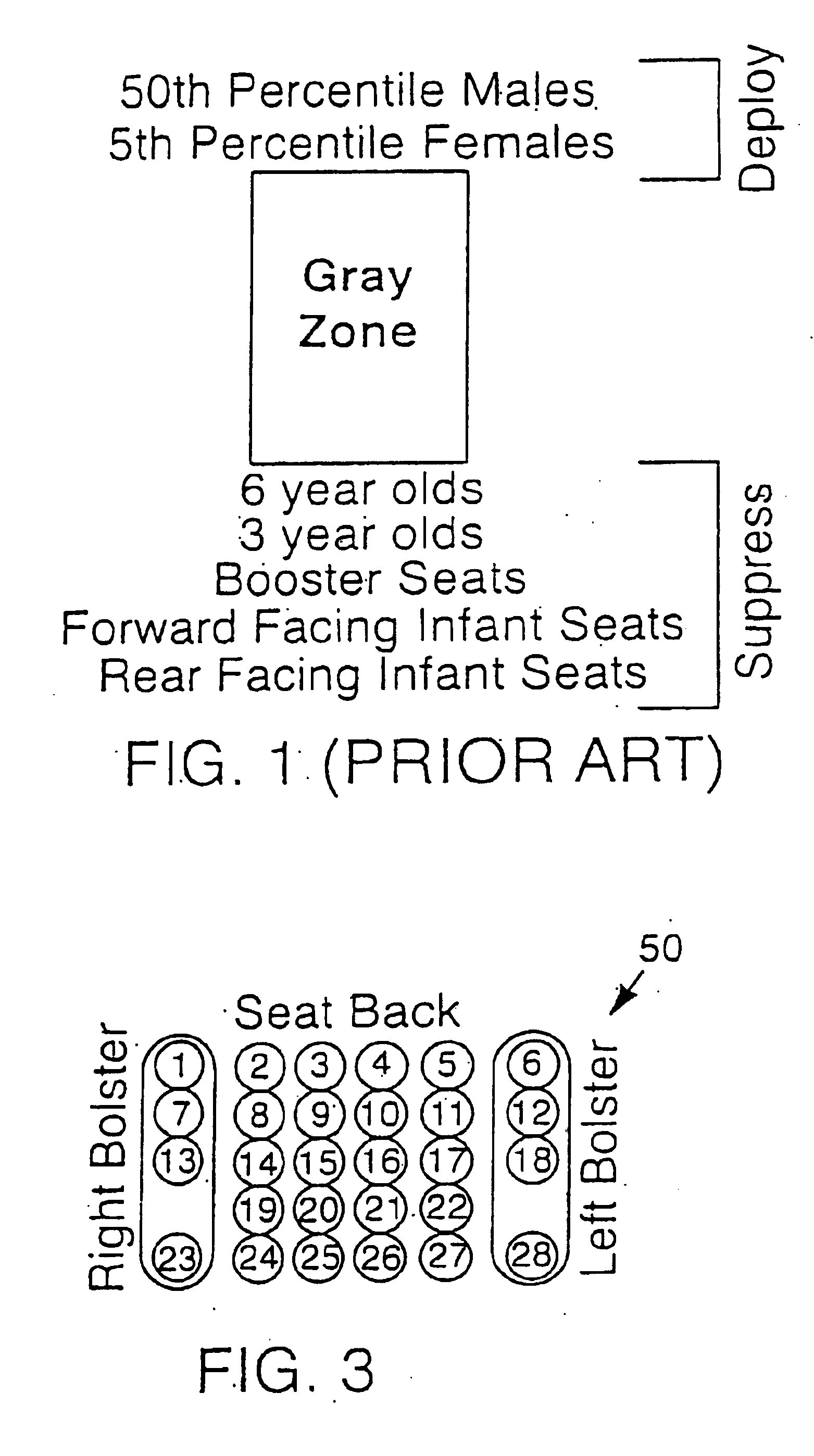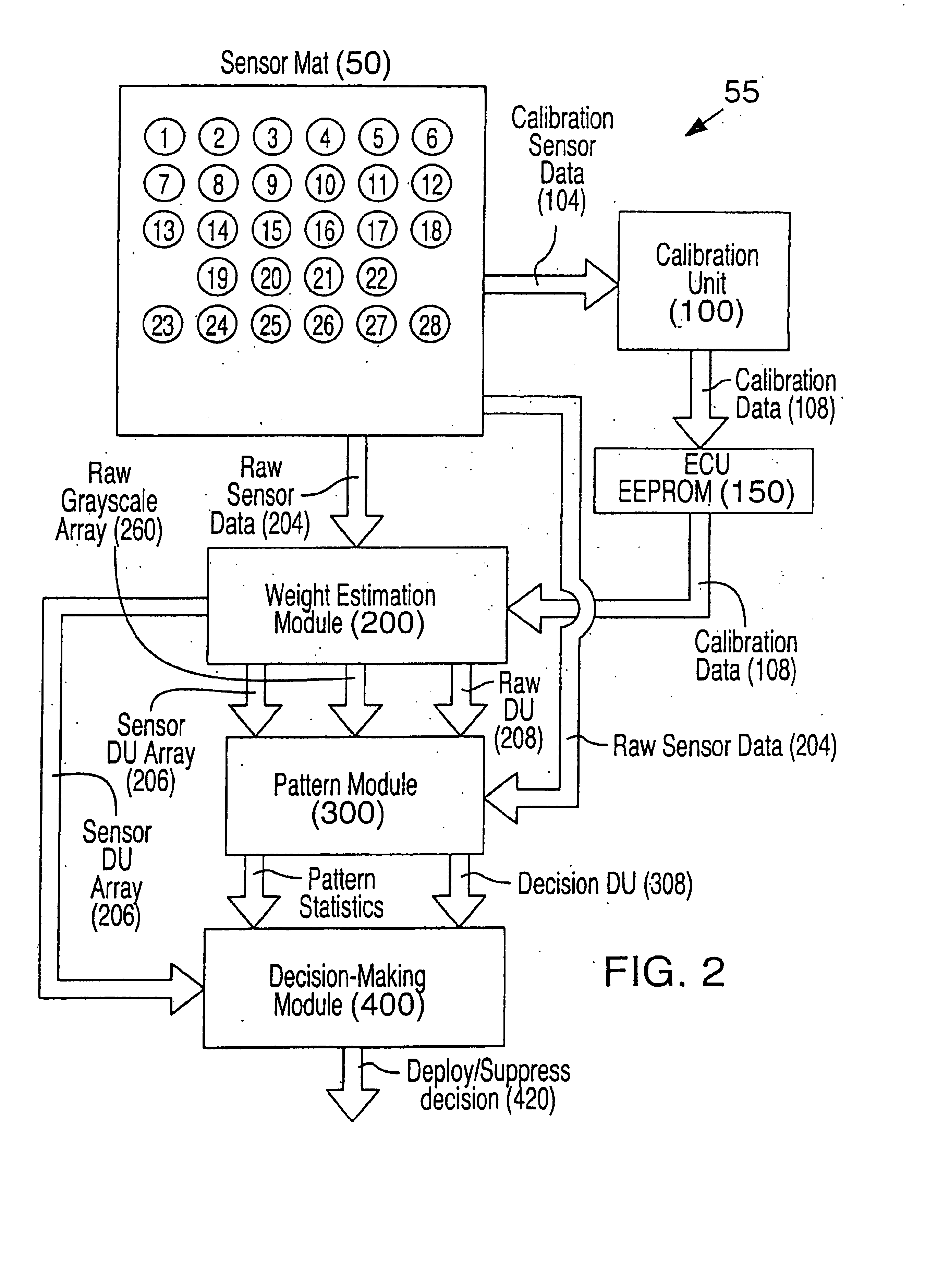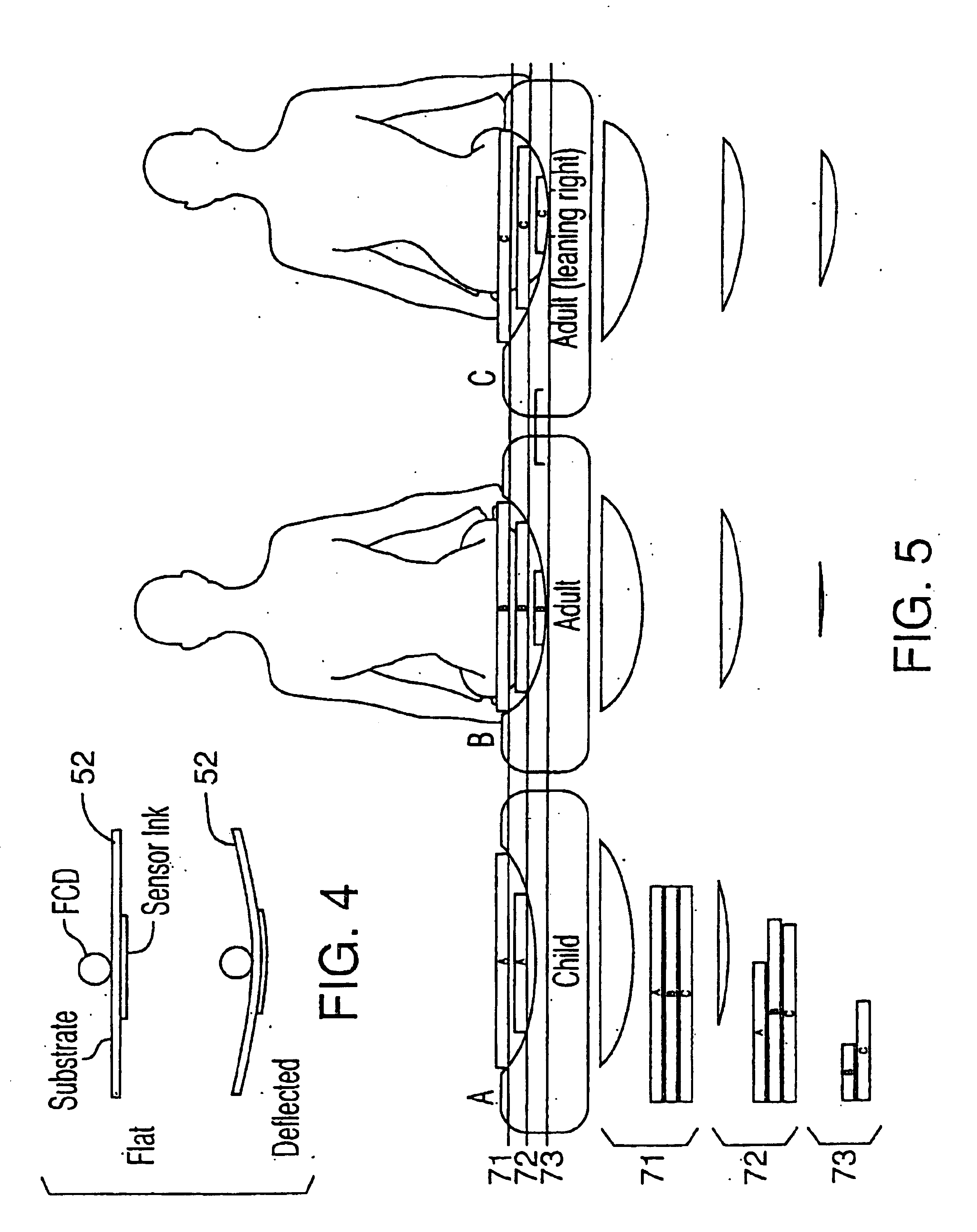Vehicle occupant classification system and method
- Summary
- Abstract
- Description
- Claims
- Application Information
AI Technical Summary
Benefits of technology
Problems solved by technology
Method used
Image
Examples
Embodiment Construction
[0078]FIG. 2 is a block diagram illustrating the major components of the Vehicle Occupant Classification System (classification system) 55 according to a preferred embodiment of this invention. The classification system 55 combines weight estimation, pattern recognition, and statistical evaluation of in-seat characteristics of an occupant in order to make an informed airbag deployment state decision. Referring to FIG. 2, the major components of the classification system include a Calibration Unit 100, a Weight Estimation Module 200, a Pattern Module 300, and a Decision-Making Module 400. Using these three components, the classification system of this invention is able to accurately detect a vehicle occupant and appropriately determine a proper airbag deployment state based on that occupant's in-seat characteristics.
[0079] The Calibration Unit 100 receives sensor data from a sensor mat50, located in the vehicle seat, during a calibration process. The purpose of the calibration proce...
PUM
 Login to View More
Login to View More Abstract
Description
Claims
Application Information
 Login to View More
Login to View More - R&D
- Intellectual Property
- Life Sciences
- Materials
- Tech Scout
- Unparalleled Data Quality
- Higher Quality Content
- 60% Fewer Hallucinations
Browse by: Latest US Patents, China's latest patents, Technical Efficacy Thesaurus, Application Domain, Technology Topic, Popular Technical Reports.
© 2025 PatSnap. All rights reserved.Legal|Privacy policy|Modern Slavery Act Transparency Statement|Sitemap|About US| Contact US: help@patsnap.com



